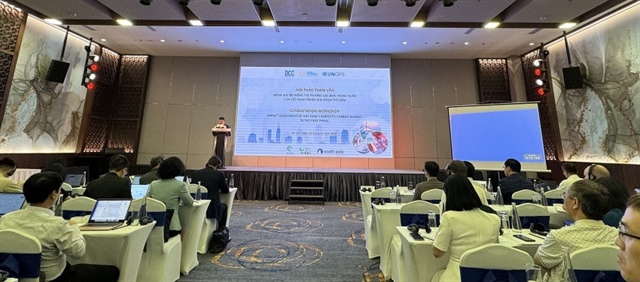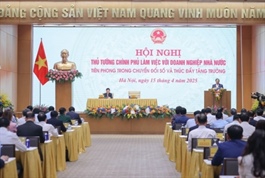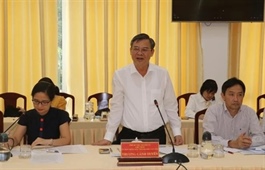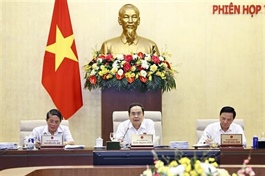200 enterprises set to participate in pilot carbon market
200 enterprises set to participate in pilot carbon market
Approximately 200 enterprises in the steel, cement, and thermal power industries will participate in the pilot carbon market, which is expected to be implemented for three years from this June.
|
The information was shared in Hanoi by Nguyen Tuan Quang, deputy director of the Department of Climate Change, at a consultation workshop held on April 16 by the Southeast Asia Energy Transition Partnership (ETP) and his department, under the Ministry of Agriculture and Environment.
The discussions are part of technical assistance on assessing the impact of greenhouse gas (GHG) emissions trading and carbon credits in Vietnam, funded by the United Nations Office for Project Services under the ETP framework, aimed at supporting the Climate Change Department in developing Vietnam’s carbon market.
At the workshop, the organising board updated on Vietnam’s regulations and roadmap for the domestic carbon market in the pilot phase and discussed international experiences on governance options and impact assessment for ETS and lessons learnt for the country.
Besides that, the organising board presented findings from the analysis of the national context and governance options for the ETS pilot phase and also discussed findings from the impact assessment of governance options.
“ETS market design options need to ensure the suitability and feasibility of scenarios concerning the scope of participating sectors, the determination of the total emissions cap, and particularly the method for initial quota allocation (such as free allocation, auction, or a combination with specific ratios) for facilities in the pilot phase, based on the impact analyses conducted,” said Quang.
“During the pilot phase, only large-scale facilities in terms of steel production, cement, and thermal power will be included in the carbon market, with an estimated 200 enterprises participating. In subsequent phases, it is expected that enterprises from other sectors will be included," he added.
To effectively operate the pilot carbon market, experts emphasised the need to carefully consider market design and management options, evaluate the impacts of each option, and select the optimal approach to balance economic development needs with GHG emissions reduction targets.
John Robert Cotton, deputy director of the ETP, said, “Assessing the impact of the carbon market will be a crucial foundation for establishing a domestic emissions trading system. This will contribute to Vietnam achieving its net-zero emissions target by 2050. The impact assessment will provide parameters, indicators, and measurement tools, enabling Vietnam to implement the pilot phase of the carbon market from 2025 to 2028, followed by full-scale implementation.”
According to proposals from the Green Climate Innovation (GreenCIC), the project’s consultant firm, there are 10 steps to designing and operating a carbon market, with three core design components, namely scope, emissions cap setting, and quota allocation.
Regarding scope, experts of GreenCIC emphasised the importance of selecting sectors/fields to participate in the ETS, ensuring a balance between GHG emissions reduction goals and economic growth. This firm also recommended that the approach be based on two main factors, namely emissions intensity and trade intensity.
“The free allocation of quotas during the pilot phase based on the unconditional UN's Nationally Determined Contribution (NDC) scenario. This is considered an important stepping stone to help enterprises become familiar with the carbon market while minimising negative impacts on production, business activities, and the overall economy during the transition period,” said Nguyen Hong Loan, advisory manager at GreenCIC.
Within the scope of the ETP-funded study, the expert team of GreenCIC conducted impact assessments of the ETS on a scale of 114 enterprises, including 56 clinker production facilities, 27 crude steel production facilities, and 31 thermal power facilities, which collectively accounted for approximately 43 per cent of the country’s total GHG emissions from 2020 to 2022. The results show that implementing the ETS could significantly reduce compliance costs for enterprises in meeting emissions reduction commitments under the NDC.
- 17:35 18/04/2025
























